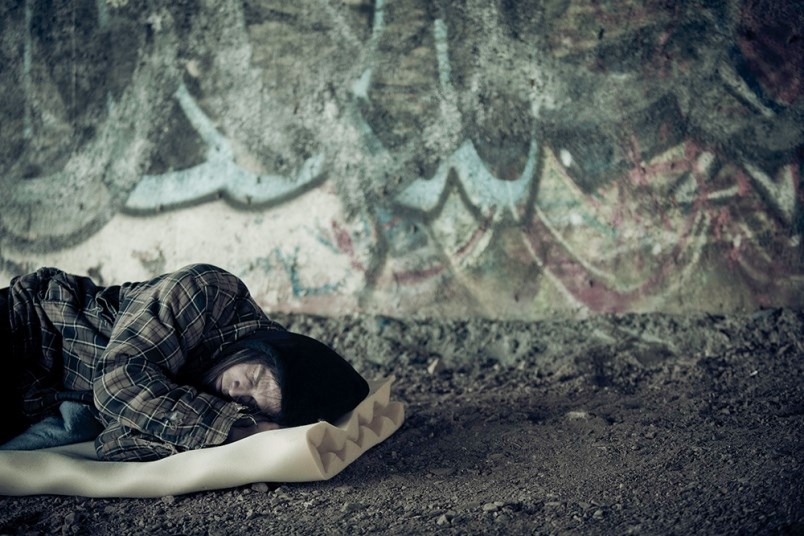Tri-City homeless may have found shelter in other communities as the province ramps up housing programs.
At least that’s one explanation for why homeless numbers are down in Coquitlam, Port Coquitlam and Port Moody, according to a local advocate.
The number of homeless individuals declined in the Tri-Cities, according to preliminary data from the 2020 Metro Vancouver homeless count.
A total of 86 people identified themselves as homeless in Tri-Cities in the most recent survey, compared to 117 in the last survey, conducted in 2017. Of those, only 24 were unsheltered, compared to 41 who had no sort of accommodation three years ago.
“I think region-wide it’s good. There has been a lot of changes in the Metro Vancouver area, which has definitely kept the numbers relatively flat across the region. There has been a lot of activity in the housing market, and I think that is reflected here,” said Polly Krier, the coordinator of the Tri-Cities Homelessness and Housing Task Group.
However, she said there is more work to do locally to build more supportive housing because there hasn’t been an increase in permanent shelter beds since 3030 Gordon was opened in 2015.
MORE BEDS ARE HELPING
However, Krier is optimistic that homeless can continue to find housing in a new emergency shelter operating out of a Coquitlam hotel.
The program funded by BC Housing and run by the Phoenix Society, provides rooms for up to 28 people, but with some referrals being couples, more people can be accommodated.
She hopes the Emergency Response Centre can stay open to accommodate Tri-City homeless this winter.
In addition to a private room, people are provided with food, medical support and other help and the program is for homeless individuals, such as seniors, who would be vulnerable to COVID-19.
Krier said a number of them have sought help for addictions, and credits stable housing for helping people take steps to change their lives.
The number of homeless also went down in Vancouver, White Rock, Maple Ridge-Pitt Meadows, New Westminster and Delta, while more homeless were counted in Surrey, Langley, Burnaby, Richmond and the North Shore.
COUNT STABLE REGION-WIDE
Overall, the count identified 3,634 individuals experiencing homelessness in the region. That’s 29 more than were counted in 2017.
This year’s count was conducted by about 1,200 volunteers on March 3 and 4 before the height of the COVID-19 pandemic.
The number of homeless under the age of 25 decreased from 16% to 8%, while 25% of individuals identified as homeless were over the age of 55 — that’s up from 23% three years ago.
Lorraine Copas, the chair of the community advisory board that oversees the count, said raw numbers don’t tell the whole story.
“It is important to recognize that behind each of the statistics is someone who is living without a place they can call their own,” she said. “The homeless count provides important insight into the diversity of individuals experiencing homelessness as well as the different challenges and circumstances they face.”
As well, the count’s early results show about a third of the region’s homeless individuals are Indigenous.
“The Indigenous community continues to bear the brunt of this crisis,” said David Wells, the chair of the Indigenous Homelessness Steering Committee. “Homelessness continues to be a critical issue for which we have not found a solution.”
For the first time, the count also identified homelessness amongst various racial groups. It found 6% of the homeless identified as Black, followed by South Asian and Latin American, both at 3%.
“The data should jolt us into action to ensure radicalized communities… receive the culturally and racially appropriate programs and services to provide better pathways to well-being,” said June Francis, the co-chair of the Hogan’s Alley Society board of directors.
The full homelessness report will be released in the fall.
— with files from Mario Bartel



